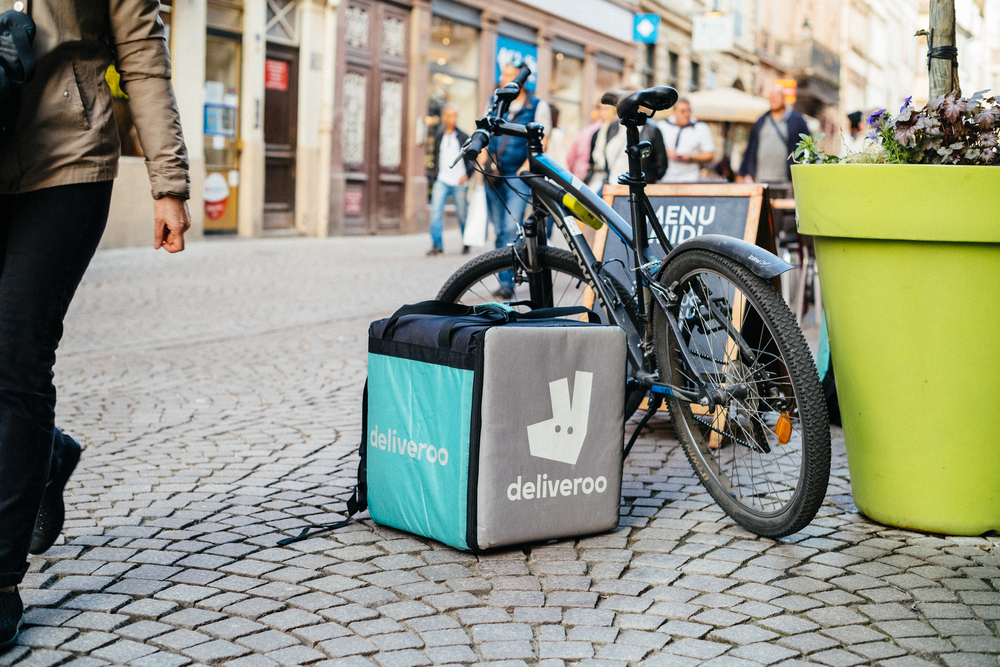Household Bills
Why Deliveroo hidden charges can add £12 to your bill

Takeaway customers don’t just pay delivery and service charges – but more for their food too.
A study by Which? has exposed the hidden costs of food delivery apps, with some delivery services costing up to 44% more than ordering the same food in a restaurant.
Researchers at Which? looked at the costs of ordering meals for between two to four people from five restaurants and cafes, both directly and on food delivery sites Deliveroo, UberEats and Just Eat.
Across the five restaurants, ordering via a takeaway app proved 23% (£7.14) more expensive on average than ordering directly from the restaurant.
Orders on Deliveroo were the most expensive overall, costing an average of 31% (£9.91) more per order than ordering directly from the restaurant. UberEats orders cost an extra 25% (£7.93), while JustEat orders were only 7% (£1.56) more expensive.
The most expensive order was a £43.94 Deliveroo takeaway from a burrito and taco restaurant, which cost 44% (£12.29) more than ordering directly from the restaurant. Even before adding delivery and service charges, the cost of the food was 26% (£8.30) more.
Food costs more on apps
Prices on apps are generally set by restaurants. However, restaurants often increase the price of items when bought through the apps to cover the service fees that the apps charge them. Ordering directly from the restaurant also does not incur the delivery charges that ordering from a delivery app does.
For restaurants forced to close during lockdown, the apps offered a lifeline to keep their businesses open. However, a number of the restaurants investigated told Which? they had to raise their prices in the apps to account for the commissions of between 15 and 35% they have to pay the delivery services. Costs vary between apps, with each one charging different service and delivery fees.
The apps say their commissions are essential for running the service – for example, insurance, paying delivery riders, customer services, and services offered to restaurants.
Food deliveries up during lockdown
During the pandemic, people’s use of food delivery apps increased as consumers looked online for their weekly takeaway or grocery shopping. Consumers may not be aware that they are paying these higher prices if they have not visited the restaurant themselves.
In Which?’s survey of more than 2,000 UK adults, more than half (56%) of people told the consumer champion they had used delivery apps for takeaways or groceries.
About six in 10 people told Which? they used takeaway apps at least monthly pre-pandemic, compared with seven in 10 now. JustEat was the most widely used app, with two in five (39%) adults choosing it compared with a quarter (26%) for UberEats and one in five (20%) for Deliveroo.
Issues with food orders
Which? also found that customers frequently have problems with orders and often find there is no way to effectively complain or put things right when this happens.
The most common issues with deliveries were late arrival, cold food and missing items. Others reported ruined items, as well as orders not turning up.
Six in 10 (59%) Deliveroo users surveyed told Which? they had a problem in the past 12 months, while more than half (53%) UberEats and JustEat (53%) customers reported having an issue with an order.
The most common resolution for UberEats customers was being offered a cash refund, but Deliveroo and JustEat users were more often offered credit or a voucher in the app. Some of these credits and vouchers come with expiry dates, and if consumers are not regular users, they could lose their money.
JustEat said customers are asked to apply the credit to their account within 30 days, after which they are able to use it indefinitely.
Of those who had a problem, more than half (53%) of Deliveroo customers and two in five JustEat (46%) and UberEats (42%) customers found it difficult to complain the last time something went wrong, according to Which?’s survey. Only about half of those who did complain were happy with how it was resolved.
Getting a refund
Which? believes food delivery apps should make the responsibilities of the restaurant and app clearer so customers are not at risk of losing out if things go wrong.
If a customer is due a refund, consumer law states that they should get it in the same way they paid out originally, unless they agree otherwise. Customers do not have to accept credit or a voucher in the app if they paid with their own credit or debit card.
Adam French, Which? consumer rights expert, said: “Next time you fancy a takeaway, you should be aware that the undoubted convenience offered by a delivery app comes with a hidden additional cost. If something goes wrong with your order, you might also find yourself caught between the restaurant and the app.
“Food delivery apps should do more to make the responsibilities of the restaurant and themselves clear so consumers are not caught between the two if there’s a problem with their order.
“If customers are owed a refund for a delivery which has gone wrong, they should remember they may be entitled to a cash refund under consumer law – they don’t have to accept credit or a voucher if it isn’t what they want.”